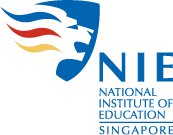By Associate Professor Tan Ai Girl, Early Childhood & Special Needs Education (ECSE)
Bring out the sense of rhythm and confidence in every child by teaching them to explore the world around them and compose musical notes with five simple ECSE inspirations.
Composing is a synthesis of vocal or instrumental sounds to produce harmony or expression of emotion. To compose is to make up a whole–to compile, to create, to write, to calm (down) or to make quiet. In this way, composing is life.
Composing creates beauty, harmony, and wellness. With some creative imagination, we can create rain sound by dragging our fingernails across the surface of a desk or wind sound by scratching a piece of paper. There are numerous inspirations to teach children with or without special needs to compose music. Here, we share five simple methods that teachers can use to bring the “Mozart” out of every child. | Read More |
1. Stimuli
Children create rhythms as a way of expressing and making sense of what they see in the world around them. They are naturally curious and external stimuli can help to arouse their interest to compose. Teachers already know about the importance of taking their young students outside of the classrooms to listen to birdsongs, immerse in nature, and socialise with other children in the playground. These are great examples of exposing children to external stimuli. Lin shared how young children naturally compose in singing, chanting, rhythmic, speech, playing and moving, like her example of a five-year-old walking home with his father humming about the traffic on the road: doo doo chic chic chic, stop by red, go by green, car is coming, car is coming (Lin, 2019, p. 65). The song was impromptu; a spontaneous response to the boy’s immediate experience in his everyday life.
2. Tradition
Provide opportunities for children to compose and perform music at cultural and traditional music festivals. As they sing and dance to the music, the children will experience moments of collaborative or distributed creativity. Nakamura and Kosaka (2019) suggested that exposing children to traditional music during cultural festivals without framing their minds of creative imagination can be beneficial for the children to compose their own songs freely and uninhibited. Nakamuar and Kosaka (2019) examined how communal space was created when young participants in the Song of Inari sang and wandered in groups during the festival. Musical creativity, being unpredictable and unconstrained, is distributed (Sawyer & DeZutter, 2009, p.82) with the ability to cross boundaries of emotion, ideology and culture.
3. Soundscape
Sometimes, a simple piece of paper can do wonders. Imada (2019) suggested two activities for children to participate in soundscape—creating sound using paper. In the first activity, the children pass a piece of paper from one person to another in silence as they observe and contemplate the rhythm of their body movements. For the second exercise, the children are given a stack of papers to produce different sounds. By varying the thickness and folding the papers, a wide repertoire of sounds can be generated. Their movements create a beautiful kinetic rhythm integral to the sounds they are composing.
4. Improvised Conversation
Koma (2019) suggested using simple instruments, like triangles, drums and tambourines to develop confidence and musical creativity in children. Her study showed how children were able to initiate improvised conversation with their tambourines as they explored the sounds of the musical instruments individually and as a group. As they generated the sounds by moving and beating the tambourines against their palms and other parts of the body, like knees, elbows and arms, the children were encouraged to assimilate and expand these sounds discovered by themselves and their groups (Koma, 2019).
5. Fusion Pedagogy
Music composition crosses the boundaries of cultural semiosphere as well as non-semiosphere of animals and objects. This musicosphere, while divergent, is a unified mechanism of music (convergence, see Noeth, 2006). A fusion pedagogy is a teaching and learning process that can be created by joining two or more social (inter)actions among the teacher and student participants in the musicosphere. A fusion pedagogy is life-enhancing as teachers and children cross all boundaries during music composition. For example, a teacher initiates a song with the children: One, two, three, four, five. Once I caught a fish alive. As the song is sung repeatedly, the teacher changes the gestures and lyrics, and the children move along with their fingers and their bodies according to the lyrics. Singing along is imaginative. The fusion of bodies and music is evident in the gesture of reeling in an imaginative fishing rod, among other actions. Composing the images of objects and numbers is meaningful creativity. The smiles on the children’s faces and the actions of their bodies endorse the lesson. As their minds and emotions move in tandem with the music and lyrics cross the biosphere, e.g. fish and fingers, and semiosphere, e.g. numbers and metaphorical expression, the children’s creative imagination flourishes in the musicosphere.
References
- Imada, T. (2019). Soundscape, sound education, and the grain of the music: Experiencing the luminousness of music being what it is. In Y. Tsubonou, A.G. Tan, & M. Oie (Eds.), Creativity in music education (pp.35-45). Singapore: Springer.
- Koma, K. (2019). Exploring children’s creative musical conversations using the tambourines. In Y. Tsubonou, A.G. Tan, & M. Oie (Eds.), Creativity in music education (pp.47-58). Singapore: Springer.
- Lin, S. F. (2019). Discovering young children’s musical creativity in their everyday life. In Y. Tsubonou, A.G. Tan, & M. Oie (Eds.), Creativity in music education (pp.59-74). Singapore: Springer.
- Nakamura, M., & Kosaka, H. (2019). Facilitation-based distributed creativity: The Inari chorus performance at the Itoshima International Art Festival. In Y. Tsubonou, A.G. Tan, & M. Oie (Eds.), Creativity in music education (pp.137-150). Singapore: Springer.
- Noeth, W. (2006). Yuri Lotman on metaphor and culture as self-referential semiospheres. Semiotics, 161(1/4), 249-263.
- Sawyer, K.R., & deZutter, S. (2009). Distributed creativity: How collective creativity emerge from collaboration. Journal of Aesthetic, Creativity, and Arts, 3(2), 81-92.





